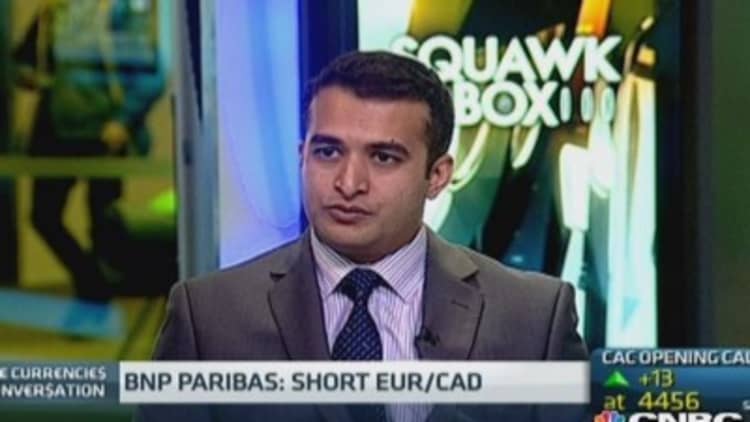Traders borrowing U.S. dollars to fund investments in other currencies should beware, with analysts expecting the greenback to strengthen and advising a shift to borrowing the euro instead.
"U.S. rates and the U.S. dollar may get a pop from an expected jump in April inflation," Barclays said Monday in a note titled "Carry on, but don't fund with USDs."
Read More Emerging markets carry trade? Well, it's back
Over the medium term, Barclays expects the U.S. inflation risks are to the upside, making it likely the greenback will continue to strengthen. Barclays expects the (DXY) to rise 5 percent by year end, with a 7.3 percent rise over 12 months.
A stronger U.S. dollar would dent the rationale for using the currency to fund carry trades, which is when investors borrow in a low-yielding currency, such as the yen or the U.S. dollar, to fund investments in higher yielding assets somewhere else. A weakening currency is central to the carry trade since it means that investors have less to repay when they cash out of the trade.
So far in the second quarter, the U.S. dollar carry trade hasn't performed well, Barclays noted, with both high- and low-yielding currencies trading sideways against the greenback amid concerns about slowing Chinese growth and rising geopolitical risks, especially over the Russia-Ukraine conflict. Higher geopolitical risk typically causes the U.S. dollar to strengthen as investors seek safer havens.
"A stronger U.S. dollar need not mean the carry is over, but with the ECB (European Central Bank) turning to policy easing, we see better funding opportunities in the euro," it said.
Read More What history tells us about the carry trade: El-Erian
It expects the negative deposit rate in the euro zone may encourage the region's banks to lend more to foreign banks in the interbank market, with greater capital outflows likely to reinforce a weakening trend for the euro.
Barclays has amended its recommendation to short the U.S. dollar against to roll it over into shorting the euro against the real.
Others also expect the U.S. dollar to gain ground.
Read More The most important indicator in the world right now: The yen
"The dollar had been pressured by the decline in U.S. rates which has been caused by the deceleration in economic activity in the first quarter. This was a direct function of a difficult winter that depressed economic activity across the nation," Kathy Lien, managing director for FX strategy at BK Asset Management, said in a note Tuesday.
"Now that the weather is improving, economic activity is expected to accelerate providing underlying support for U.S. rates," she said. "If U.S. yields start to respond positively to U.S. data, it would create the perfect backdrop of a broader recovery in the dollar."

Read MoreForget 'fragile,' these are 'high five' currencies
Other central banks, such as the ECB, the Bank of Canada and the Reserve Bank of New Zealand, are also becoming more dovish than the U.S. Federal Reserve, she noted.
"The dollar will benefit as this shift in bias is expected to put pressure on these currencies," Lien said.
But she isn't as certain that the euro is due to decline much further. While the ECB is likely to take easing measures next month, the moves are likely to be small, with only a limited impact on the currency, she noted.
—By CNBC.Com's Leslie Shaffer; Follow her on Twitter @LeslieShaffer1

